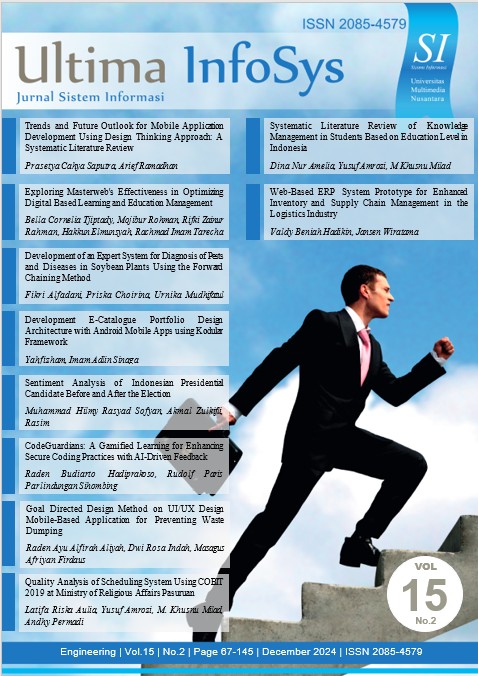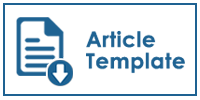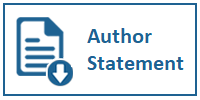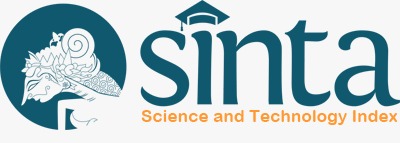Goal Directed Design Method on UI/UX Design Mobile-Based Application for Preventing Waste Dumping
DOI:
https://doi.org/10.31937/si.v15i2.3864Abstract
The issue of waste dumping persists a significant challenge in Indonesia, particularly in the context of South Sumatra Province. In 2022, the quantity of unmanaged waste in South Sumatra Province was documented at 521,075 tons per year. In the course of 2024, South Sumatra was subjected to a total of 58 floods. This illustrates that flooding remains a significant challenge that necessitates the development of innovative solutions, as it can impede the attainment of the Sustainable Development Goals (SDGs), particularly those pertaining to SDG 11, namely the maintenance of sustainable cities and communities. The act of discarding refuse into air ducts represents a significant contributing factor to the occurrence of flood disasters. Accordingly, this research was undertaken with the objective of designing an interface for the Jagoan Sungai application, which is intended to prevent waste dumping. The application was designed with the specific purpose of facilitating the reporting of instances of littering in river environments by individual communities. The application was designed using the Goal Directed Design method and subsequently evaluated using the User Experience Questionnaire (UEQ) method and the Think Aloud method. The UEQ test results indicate that the scores for the six scales exceed 0.8, indicating a high level of user satisfaction. The Think Aloud test results demonstrate that while no significant improvements are necessary, additional information should be incorporated into the application to enhance the user experience further.
Downloads
Downloads
Published
How to Cite
Issue
Section
License
Authors retain copyright and grant the journal right of first publication with the work simultaneously licensed under a Creative Commons Attribution-ShareAlike International License (CC-BY-SA 4.0) that allows others to share the work with an acknowledgement of the work's authorship and initial publication in this journal.
Authors are able to enter into separate, additional contractual arrangements for the non-exclusive distribution of the journal's published version of the work (e.g., post it to an institutional repository or publish it in a book), with an acknowledgement of its initial publication in this journal.
Copyright without Restrictions
The journal allows the author(s) to hold the copyright without restrictions and will retain publishing rights without restrictions.
The submitted papers are assumed to contain no proprietary material unprotected by patent or patent application; responsibility for technical content and for protection of proprietary material rests solely with the author(s) and their organizations and is not the responsibility of the ULTIMA InfoSys or its Editorial Staff. The main (first/corresponding) author is responsible for ensuring that the article has been seen and approved by all the other authors. It is the responsibility of the author to obtain all necessary copyright release permissions for the use of any copyrighted materials in the manuscript prior to the submission.















